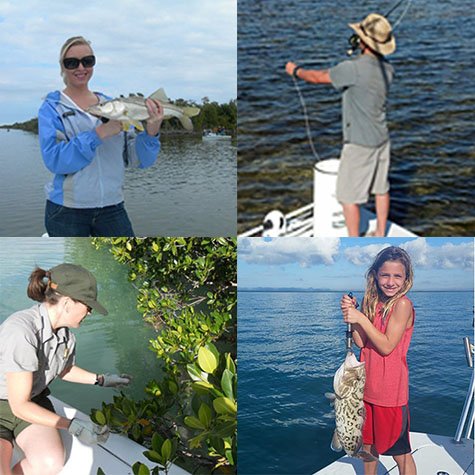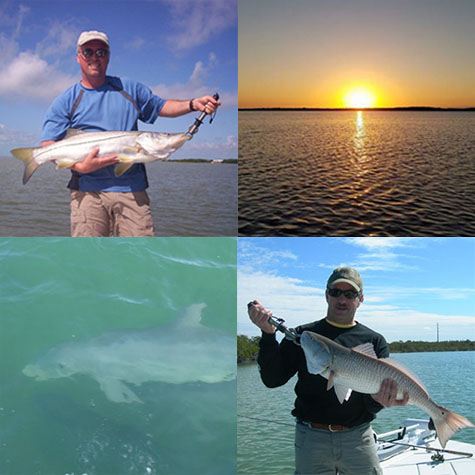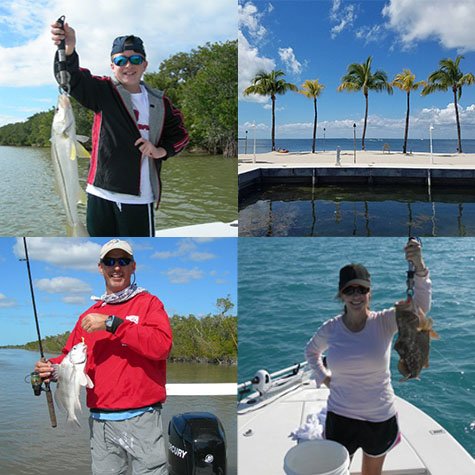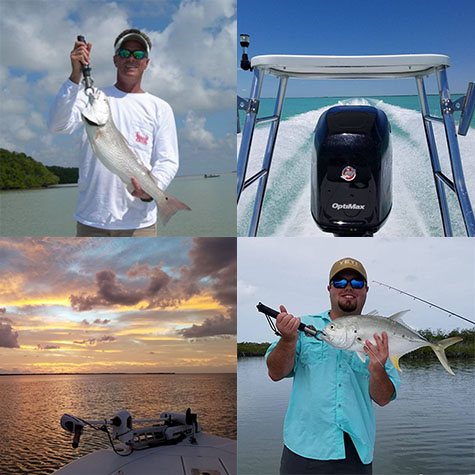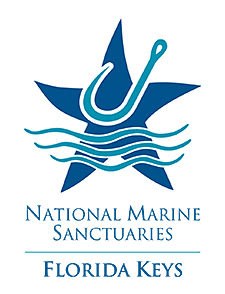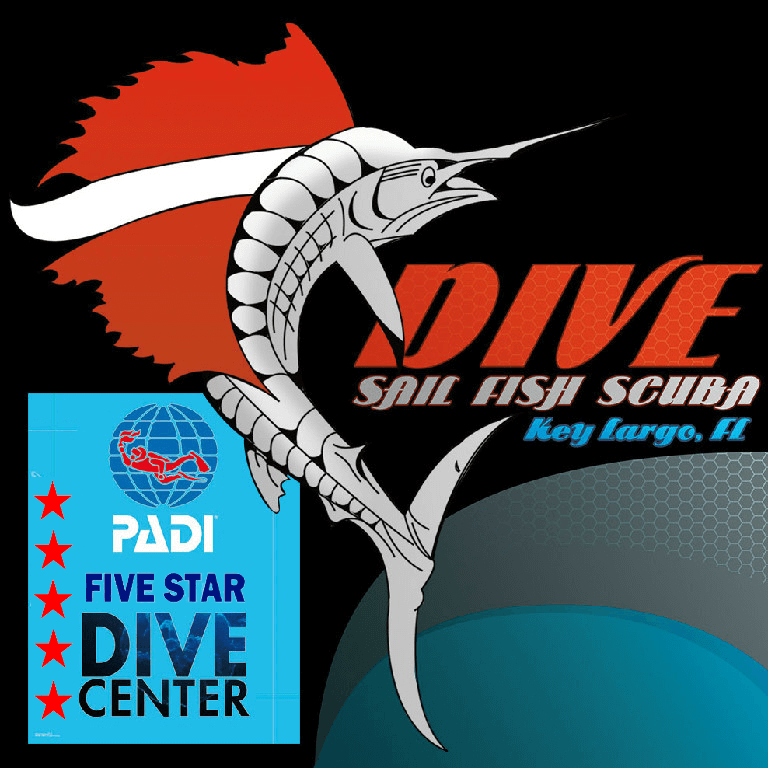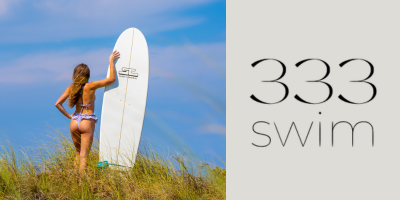ULTIMATE GAMEFISH
Backcountry Fishing Key Largo![]()
Enjoy Ultimate BackCountry Flats Fishing
Key Largo And The Everglades
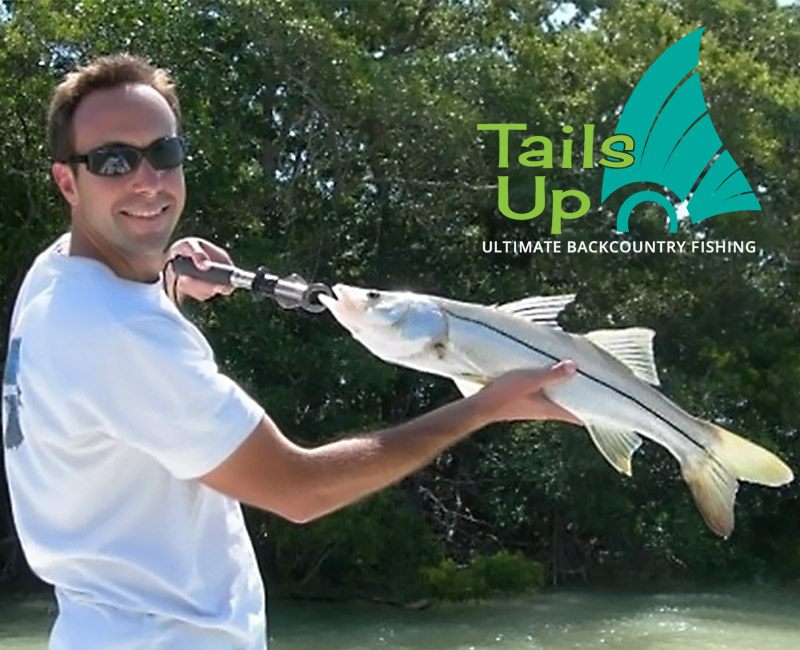
For The Ultimate Key Largo Backcountry 
We will take you through a specialized tour of the backcountry and flats fishing.
For The Ultimate Key Largo Backcountry

We will take you through a specialized tour of the backcountry and flats fishing.
EXPERIENCE BACKCOUNTRY FISHING KEY LARGO
Captain Kerry is one of the few guides entrusted with a special permit to fish in Everglades National Park. With a variety of fish, Captain Kerry’s experience will target ultimate gamefish to make your onboard experience unique while fishing Key Largo.
Fishing will be just part of your onboard experience. When you book a trip, you are very likely to see a myriad of wildlife including birds such as roseate spoonbills, bald eagles, ospreys, brown and white pelicans, egrets and herons; as well as and dolphins and manatees.
EXPERIENCE BACKCOUNTRY
FISHING KEY LARGO
Captain Kerry is one of the few guides entrusted with a special permit to fish in Everglades National Park. With a variety of fish, Captain Kerry’s experience will target ultimate gamefish to make your onboard experience unique while fishing Key Largo.
Fishing will be just part of your onboard experience. When you book a trip, you are very likely to see a myriad of wildlife including birds such as roseate spoonbills, bald eagles, ospreys, brown and white pelicans, egrets and herons; as well as and dolphins and manatees.
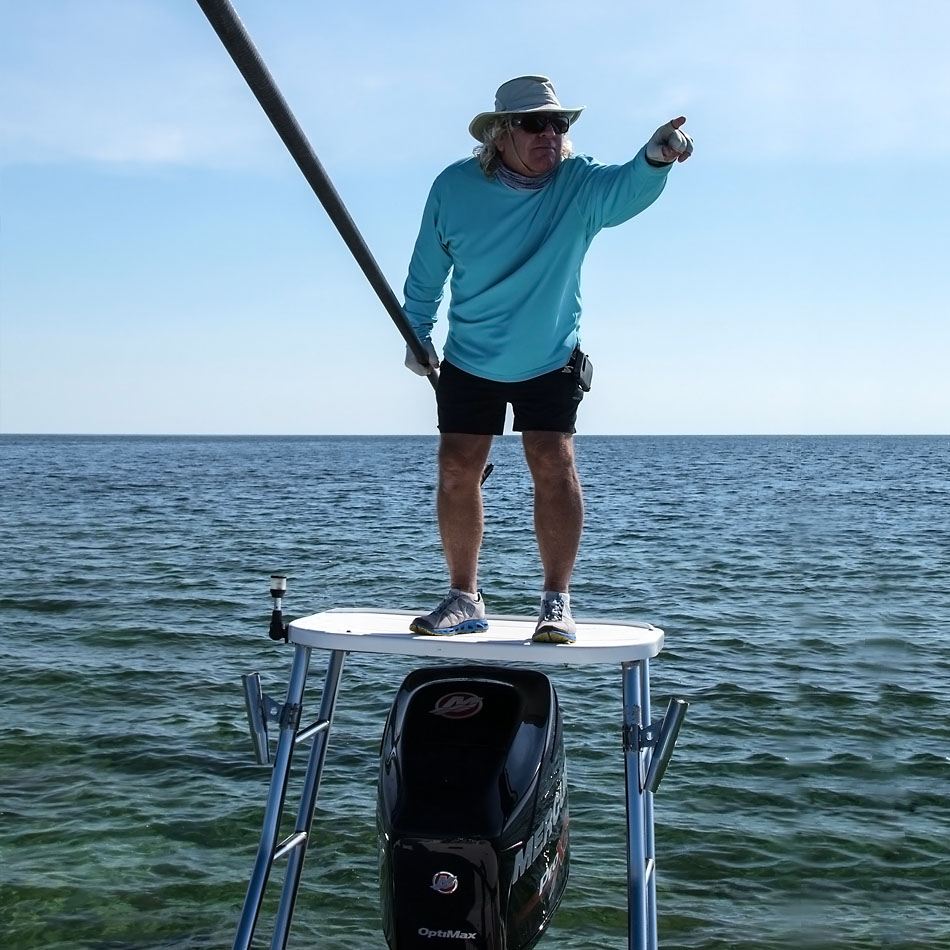
We target game fish by pushing the boat with a pole. into the clear shallow waters and fishing Key Largo Flats. This allows us to approach silently and cast the bait into the path of fish.
It is exciting fishing,
more like hunting than fishing.
We target game fish by pushing the boat with a pole. into the clear shallow waters and fishing Key Largo Flats. This allows us to approach silently and cast the bait into the path of fish.
It is exciting fishing,
more like hunting than fishing.

FISHING KEY LARGO
Fish Of The Flats
Click For More Info On Tarpon
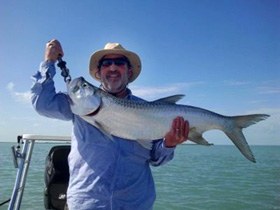
If fishing for big fish with light tackle is your game, then fishing Key Largo is the place to be from April to the end of July. While you can catch these fish all year long, that’s generally when the tarpon migrate — meaning hot and heavy fishing for lucky anglers.
These fish, also known as the “Silver King,” move through the creeks and inlets connecting Florida Bay to the Atlantic Ocean. Fishing the creeks with live bait is popular and produces some huge fish well over 100 pounds and sometimes as large as 150 pounds. But artificial lures can also do the trick.
Click For More Info On Permit
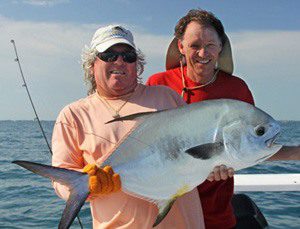
The permit is a game fish off the East Coast of United States and actually extending down to Brazil.
Permit are usually found in shallow, tropical waters such as flats, channels and muddy bottoms. Although permit are found close to shore and even in some brackish areas, they spawn offshore. Young permit are found usually in the surf zone where there is plenty of food. Permit love to dine on crabs, but they have been known to eat sea urchins and even lobster. Like bonefish, they can be spotted “tailing” on the flats as they hunt for food.
Permit can reach 48 inches long and weigh up to 79 pounds. The largest permit caught in Florida was 51 pounds, 8 ounces.
Click For More Info On Bonefish
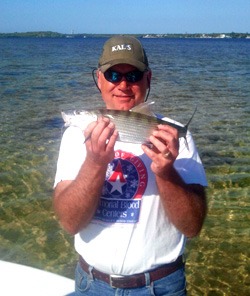
People from all over the world travel to the Key Largo/Islamorada area to try their luck and skill fishing Key Largo for the elusive bonefish — which has been rightfully compared to a rocket with fins. When hooked, it can peel off 100 yards of line in the blink of an eye.
These fish — also known as the “Gray Ghost” or “Ghost of the Flats” — like to eat shrimp and crabs but can be fooled by flies patterned after their favorite live baits. All you need is hook-up to understand why these fish are so prized as gamefish. There are many techniques used to capture bonefish. One of the oldest is to position your boat on a flat where there is good water flow and anchor up or stake out, toss out a few lines with live shrimp on the hook, and wait.Throwing out a few broken up pieces of shrimp never hurts either. This has been an effective method and is still practiced to this day.
Click For More Info On Redfish
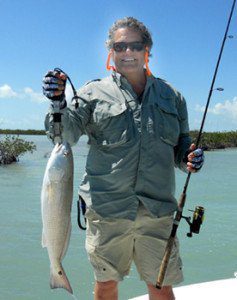
These fish are common all year and are great for sight-fishing. They feed in water so shallow that their tails wave in the air like flags! What a sight!
Fishing Key Largo for Redfish in the Florida Keys is mainly done in shallow water. The flats and shorelines from Key Largo to Flamingo in the Everglades and beyond to Cape Sable are ideal for holding small bait fish and crustaceans that Redfish feed on.
When looking for food, these beautiful copper colored fish can be seen making wakes in the water. A Redfish’s mouth is positioned down so it normally feeds on the bottom.
When actively feeding, you can spot their tails sticking out of the water (called tailing). Casting to tailing fish is one of the most exciting ways to catch a Redfish. When they see your offering, whether it be a live shrimp, soft plastic bait, or a fly, they will attack it with a vengeance.
Fighting a Redfish is like going toe to toe with a heavyweight boxer. They will slug it out with you all the way to the boat.
Click For More Info On Snook
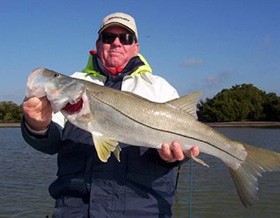
This gamefish is one of the most sought-after of the inshore species. It pulls like a freight train and is acrobatic, too.
The snook is very easily identified by the long black lateral line on its side. The lateral line helps them pick up vibrations from baitfish and other prey. Other distinct characteristics of the snook are its divided dorsal fins, long sloping forehead, and protruding lower jaw. The fins are yellowish gold in color and are much brighter during spawning season.
Snook fishing Key Largo and the Upper Keys can be some of the best that you will ever find. These highly sought-after prizefighters are plentiful in eastern Florida Bay and the Flamingo area. Snook can also be found along mangrove shorelines, on the shallow areas referred to as “flats,” and in the deeper creeks and channels.
There are many different techniques used when snook fishing, some of which are casting plugs and live baits to shorelines, throwing soft plastic jerk baits and spoons on the flats, and using a jig and live bait combination in the creeks and channels.
Juvenile snook prefer fresh or brackish water habitats but must move into saltwater to spawn, so what better place to find snook than right here at the end of the Everglades. Snook can also be taken on a variety of fly patterns, created to appear just like their favorite bait.
Not only are these fish heavy-duty fighters, they are some of the tastiest fish you’ll ever eat.
Click For More Info On Shark
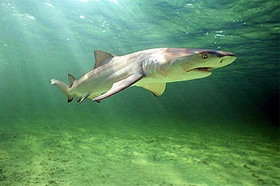
The warm, shallow waters of Everglades National Park are home to some very big sharks.
If you would like to test your light tackle skills, let us hook you up with a big lemon or bull. Sharks are strong and incredibly fast and will make you use every muscle in your body before they come to the boat and pose for a picture.
Would you like to land a 150-pound fish on casting tackle? Give us a call!
FISHING KEY LARGO
Fish Of The Flats
Click For More Info On Tarpon

If fishing for big fish with light tackle is your game, then fishing Key Largo is the place to be from April to the end of July. While you can catch these fish all year long, that’s generally when the tarpon migrate — meaning hot and heavy fishing for lucky anglers.
These fish, also known as the “Silver King,” move through the creeks and inlets connecting Florida Bay to the Atlantic Ocean. Fishing the creeks with live bait is popular and produces some huge fish well over 100 pounds and sometimes as large as 150 pounds. But artificial lures can also do the trick.
Click For More Info On Permit

The permit is a game fish off the East Coast of United States and actually extending down to Brazil.
Permit are usually found in shallow, tropical waters such as flats, channels and muddy bottoms. Although permit are found close to shore and even in some brackish areas, they spawn offshore. Young permit are found usually in the surf zone where there is plenty of food. Permit love to dine on crabs, but they have been known to eat sea urchins and even lobster. Like bonefish, they can be spotted “tailing” on the flats as they hunt for food.
Permit can reach 48 inches long and weigh up to 79 pounds. The largest permit caught in Florida was 51 pounds, 8 ounces.
Click For More Info On Bonefish

People from all over the world travel to the Key Largo/Islamorada area to try their luck and skill fishing Key Largo for the elusive bonefish — which has been rightfully compared to a rocket with fins. When hooked, it can peel off 100 yards of line in the blink of an eye.
These fish — also known as the “Gray Ghost” or “Ghost of the Flats” — like to eat shrimp and crabs but can be fooled by flies patterned after their favorite live baits. All you need is hook-up to understand why these fish are so prized as gamefish. There are many techniques used to capture bonefish. One of the oldest is to position your boat on a flat where there is good water flow and anchor up or stake out, toss out a few lines with live shrimp on the hook, and wait.Throwing out a few broken up pieces of shrimp never hurts either. This has been an effective method and is still practiced to this day.
Click For More Info On Redfish

These fish are common all year and are great for sight-fishing. They feed in water so shallow that their tails wave in the air like flags! What a sight!
Fishing Key Largo for Redfish in the Florida Keys is mainly done in shallow water. The flats and shorelines from Key Largo to Flamingo in the Everglades and beyond to Cape Sable are ideal for holding small bait fish and crustaceans that Redfish feed on.
When looking for food, these beautiful copper colored fish can be seen making wakes in the water. A Redfish’s mouth is positioned down so it normally feeds on the bottom.
When actively feeding, you can spot their tails sticking out of the water (called tailing). Casting to tailing fish is one of the most exciting ways to catch a Redfish. When they see your offering, whether it be a live shrimp, soft plastic bait, or a fly, they will attack it with a vengeance.
Fighting a Redfish is like going toe to toe with a heavyweight boxer. They will slug it out with you all the way to the boat.
Click For More Info On Snook

This gamefish is one of the most sought-after of the inshore species. It pulls like a freight train and is acrobatic, too.
The snook is very easily identified by the long black lateral line on its side. The lateral line helps them pick up vibrations from baitfish and other prey. Other distinct characteristics of the snook are its divided dorsal fins, long sloping forehead, and protruding lower jaw. The fins are yellowish gold in color and are much brighter during spawning season.
Snook fishing Key Largo and the Upper Keys can be some of the best that you will ever find. These highly sought-after prizefighters are plentiful in eastern Florida Bay and the Flamingo area. Snook can also be found along mangrove shorelines, on the shallow areas referred to as “flats,” and in the deeper creeks and channels.
There are many different techniques used when snook fishing, some of which are casting plugs and live baits to shorelines, throwing soft plastic jerk baits and spoons on the flats, and using a jig and live bait combination in the creeks and channels.
Juvenile snook prefer fresh or brackish water habitats but must move into saltwater to spawn, so what better place to find snook than right here at the end of the Everglades. Snook can also be taken on a variety of fly patterns, created to appear just like their favorite bait.
Not only are these fish heavy-duty fighters, they are some of the tastiest fish you’ll ever eat.
Click For More Info On Shark

The warm, shallow waters of Everglades National Park are home to some very big sharks.
If you would like to test your light tackle skills, let us hook you up with a big lemon or bull. Sharks are strong and incredibly fast and will make you use every muscle in your body before they come to the boat and pose for a picture.
Would you like to land a 150-pound fish on casting tackle? Give us a call!
WHAT TO BRING
At Tails Up Fishing, we use and provide only professional gear, rods, fishing licenses, U.S. Coast Guard Equipment, and ice coolers allowing you to enjoy a genuine backcountry fishing experience. The following are a few items you may want to bring with you.
CAMERA
SUNBLOCK
(No Aerosol Spray)
HAT
LONG SLEEVED SHIRT
POLARIZED SUNGLASSES
(Recommended)
SNACKS
COMFORTABLE SHOES
(No Black Soles – They Mark The Deck)
YOUR ENTHUSASIM !
WHAT TO BRING
At Tails Up Fishing, we use and provide only professional gear, rods, fishing licenses, U.S. Coast Guard Equipment, and ice coolers allowing you to enjoy a genuine backcountry fishing experience. The following are a few items you may want to bring with you.
CAMERA
SUNBLOCK
(No Aerosol Spray)
HAT
LONG SLEEVED SHIRT
POLARIZED SUNGLASSES
(Recommended)
SNACKS
COMFORTABLE SHOES
(No Black Soles – They Mark The Deck)
YOUR ENTHUSASIM !
#TAILSUPFISHING
